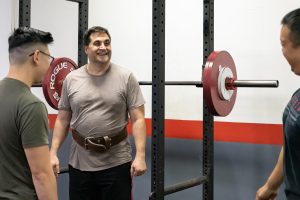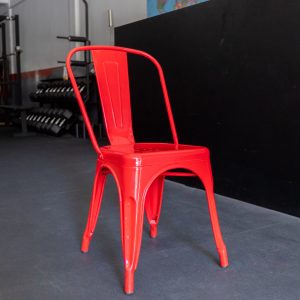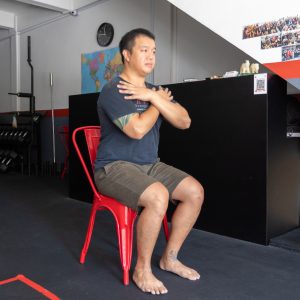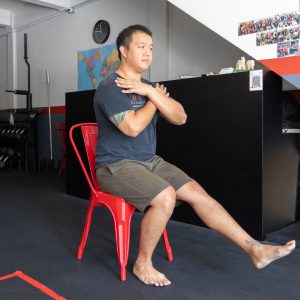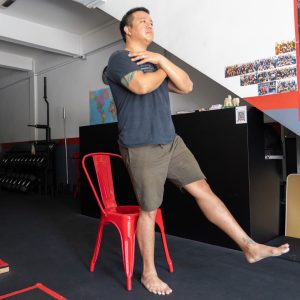Strength is an essential and integral part of our lives, whether we’re aware of it, or not. Cardiovascular endurance and flexibility are often promoted by the media and general population as being of utmost importance and the gold standard of health and fitness with strength (in the way that we at Hygieia Strength & Conditioning define it) barely getting mentioned. Thankfully, this is slowly changing and the importance of strength is gradually being realised.
Strength is what allows us to interact with our environment. Every single movement that we make, no matter how big or small, requires strength. For most of us, we don’t give much thought to the seemingly trivial activities that we perform daily, and we take movements like walking or getting up from a chair for granted. However, for older individuals with sarcopenia (the loss of skeletal muscle mass as a result of ageing) or dynapenia (the loss of muscular strength), these simple movements can be monumental tasks.
Our gym is located across the road from a housing estate that was built in the 1970s, which means that its occupants are mainly older folks. We see these folks every day, straining to do their daily activities — shuffling slowly with walking sticks or walkers to get their dinner, needing assistance to get in and out of a car or struggling to get off a chair. Every time I see these folks, it’s a grim reminder of what can happen to one’s quality of life if strength is not preserved.
Loss of strength and muscle is a natural process of ageing. Being sedentary exacerbates this process —physically inactive people can lose as much as 3to 5% of their muscle mass each decade after 30. After the age of 70, that figure goes up to about 15% per decade — it’s a factor in frailty and increases the likelihood of falls and fractures in older adults. The younger people reading this will think that’s still really far away and this is something that will affect grandma or grandpa, and they’ll worry about it later in life.
Unfortunately, most humans are not the best when it comes to long-term planning for their future — reactive rather than proactive seems to be the norm. Loss of strength is a very gradual process — you won’t notice your muscles getting weaker day by day till one day you suddenly realise “Damn, I need help getting out of the car”. While you won’t feel the effects of muscular atrophy when you’re younger, the earlier you start doing something to plan ahead to be physically competent when you’re older, the better off you’ll be. Planning to be still physically strong when you’re in your 50s, 60s and beyond is very much like planning financially for retirement.
Can you still get stronger when you’re in your 50s? Of course you can. Can you start planning and saving for retirement when you’re in your 50s? Of course you can. However, would you be better off if you started in your 30s? Building strength and muscle mass is like building your financials for retirement — the earlier you start, the more you can accumulate, and the better you’ll be.
Why do I have to get stronger? Can’t I just maintain my strength? Of course you can. Why do I have to keep growing my funds? Can’t I just leave whatever I have in the bank? Of course you can. Or would you be better off if you kept growing both? Think of the natural ageing process like inflation. Every year, the value of whatever you have in the bank gets eroded due to inflation. Like inflation, your strength and muscle mass are eroded over time due to the ageing process. While you can’t reverse inflation or the ageing process, you can blunt its effects by saving your earnings and growing your savings by investing. Likewise, you can’t reverse the ageing process, but you can blunt its effects by getting stronger with strength training.
Just like there are questionnaires and tests to gauge if you’re on the path to be financially ready for retirement, there are a multitude of simple tests you can perform at home that can give you immediate feedback on the physical strength of your lower extremities. One such test is the single-leg stand up test. Here’s how to do it.
Step 1:
Get a chair with a 40-cm high seat. If you’re unable to get a chair with a seat height of 40cm, you can manipulate its height by standing on a raised platform e.g. a stack of books.
Step 2:
Sit on the chair and with your arms crossed in front of your chest. Feet will be placed flat on the floor, slightly behind your knees.
Step 3:
Straighten one leg slightly to lift that foot off the floor.
Step 4:
Without using momentum, stand up.
Step 5:
Hold the standing position for 3 seconds.
If you’re able to do this, awesome! However, if you weren’t able to stand up using one leg now, the likelihood of you losing your ability to perform activities of daily living in future is high. I sincerely hope that this lights a fire under your ass to, well, get off your ass and start getting stronger. Being strong enough to perform the activities of daily living will dictate your quality of life — standing up from a chair, carrying your groceries, walking around. Not being strong enough to perform these movements means losing your independence. Losing the ability to perform these movements unassisted as you age isn’t a fact of life you have to accept. You can do something about it regardless of your age or gender. You can get stronger to preserve your quality of life, maintain your independence and do the things that you enjoy.
Barbell strength training is not the exclusive domain of younger males as stereotypically thought — it’s for everyone. Our clients, fervent supporters of strength training, share their experiences and the benefits of training with their family and friends but almost always receive negative feedback, to the point whereby some just stop talking about it altogether. However, ask them about it and they’re very willing to open up and share.
Due to misconceptions and misinformation, many older adults (who are the ones who need this the most) shun strength training stating reasons like “I’m too old for this”, “I have injuries and this is dangerous for me”, or simply “It wouldn’t be safe for my back”. Their concerns are genuine — they’re trying to protect themselves from danger and the unfamiliar, which is entirely understandable. Older adults tend to be more cautious and (for better or worse) tend to be more apprehensive about trying out something new, especially if they have negative preconceived notions about it.
We accept that not everyone will be convinced by our case that barbell strength training is safe and effective. We acknowledge that not everyone will be open to giving barbell strength training a shot. We know that not everyone will believe that getting stronger will change their lives for the better. And that’s ok. However, if you want to make a difference in your quality of life and are willing to put in the effort to train with barbells and get strong, we’re here for you. We’ll guide you through the process of getting strong by lifting barbells safely and effectively, regardless of your age, experience or limitations.

